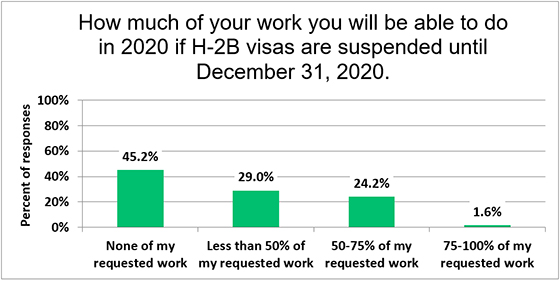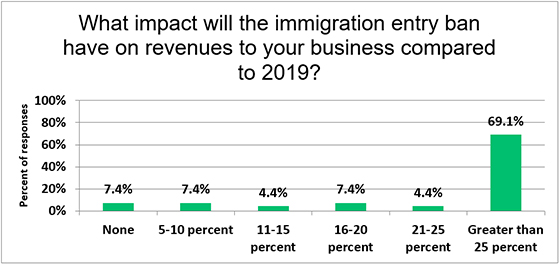Seeing the Forest Without the Trees: A Potential Reality Without Enough Tree Planters

Why regenerate a forest?
Forest regeneration is an important component of timber harvests and following a natural disaster it is also key to sustainable forestry. Restocking the forest provides many ecosystem benefits, including carbon sequestration, water quality, wildlife habitat, aesthetics, forest recreational opportunities, and timber and non-timber forest products. For forest landowners, it also provides income opportunities. The availability of wood fiber from forest lands is critical to the forest industry as it provides the raw material for their manufacturing process.
While some tree species provide ample regeneration following a timber harvest, others require tree planting. Timely regeneration after a harvest is critical as a delay in regenerating a forest can mean a loss of timber growth and revenue. A delay can also cause competing vegetation to take over a site, increasing the expense of regenerating the area. Through their forest practice laws, some states require adequate regeneration of a harvested site within a few years following a timber harvest.
What does a tree planter do?
Thousands of seasonal tree planters are needed to plant the billions of seedlings on reforestation sites across the U.S. annually. A tree planter’s work requires that they carry sacks of 100 seedlings around their waist or on their back while they dig holes and plant trees on variable terrain while walking through brush, working in inclement weather, and being attacked by mosquitoes, biting flies, ticks, chiggers and other nuisances. It definitely is not a job for everyone!
Who plants all of those trees?
The H-2B visa program was created in 1986 to allow non-agricultural foreign guest laborers to perform labor or services of a temporary nature if unemployed U.S. workers are not available. Those temporary workers have been the primary source of tree planting labor in the U.S. for many years. In fiscal year 2019, the U.S. Department of Labor (DOL) certified 11,283 visas for forestry and conservation. But on June 24, 2020, wanting to open as many jobs as possible for American workers during the COVID-19 pandemic, President Trump issued a proclamation that suspended most H-2B work visas, including forestry workers. The net effect is that new seasonal workers from Mexico and South America cannot join forestry crews.
What land management services say about their use of use tree planters
To learn more about how land management service businesses who contract out their services use H-2B visa workers, the Forest Resources Association (FRA) conducted an online survey of 120 businesses between July 7-17, 2020, using SurveyMonkey. A total of 70 businesses responded to the survey, a 58.3% response rate. Some of the highlights from the responses are noted below.
How many visas were requested?
- On average, respondents requested visas for 6,252 H-2B workers during Federal FY19 and 6,350 H-2B workers (an average of 98 individuals/business) during FY20. Thus, respondents accounted for approximately 56.5% of the entire H-2B visa workers requested for forestry work per the DOL data.
Fewer businesses received visas for all their guest workers in FY 20.
- The percentage of respondents who did not receive visas for all the guest workers they requested more than doubled from 16% in FY19 to 32% in FY20. This suggests that it is becoming more difficult for employers to receive visas for H-2B forestry workers as demand greatly exceeds the legislatively mandated cap of 66,000 by two to three times in recent years.

Tree planting is the major activity of their H-2B visa guest workers.
- Approximately 93% of the respondents use their H-2B workers to accomplish tree planting, an activity which is generally done in early spring and fall. Respondents are also highly dependent on their H-2B workers to accomplish thinning (61% of respondents), apply herbicides as a part of forest management (58% of respondents), and clearing brush (54% of respondents).

Only two percent of advertised reforestation jobs were filled by U.S. workers.
- Prior to receiving H-2B guest workers, businesses are required to advertise the available jobs to U.S. workers. The number of U.S. workers who applied was small compared to the total need (226 in FY19 and 123 in FY20). In FY20, only two percent of advertised reforestation jobs were filled by U.S. workers and the remaining 98% by H-2B guest workers.
Suspension of H-2B visas will negatively impact 90% of responding businesses.
- The suspension of H-2B visas for forestry work until December 31, 2020, will have a negative impact on 90% of the responding businesses. Forty-five percent of the respondents indicated that they will not be able to do any of their requested work if H-2B visas are suspended until December 31, 2020, and an additional 29% indicated that they would be able to do less than 50% of their requested work. Less than two percent of the responding businesses said that they would be able to do at least 75% of their requested work.

An estimated 1.6 million acres of forest land will not be reforested because of the suspension.
- Nearly all replanting work in the U.S. is done by H-2B workers. H-2B forestry workers plant 1.55 billion tree seedlings on 2.2 million acres of forestland each year. It is estimated that nearly 1.6 million acres of forest land will not be planted (reforested) by the responding businesses because of the suspension of H-2B visas until December 31, 2020. This equates to more than 1.12 billion trees that will not be planted and have to be destroyed. A delay or lack of planting will impact revenues for both forest landowners as well as the forest industry, which depends on the availability of wood fiber from those lands in their manufacturing process. Not replanting those areas and having to destroy the seedlings will hurt the already-struggling nursery industry.
Suspension of H-2B visas will decrease revenues of most contract businesses and the forest products industry.
- Sixty-nine percent of the businesses reported that suspending H-2B visas until December 31, 2020, will decrease their 2020 revenues by more than 25% as compared to 2019. Ninety-three percent of the respondents believe that this will have a large impact on the health of the forest products industry. Only seven percent of the businesses indicated that the immigration entry ban would have no impact on their 2020 revenues as compared to 2019.

What does all of this mean for communities, companies, and other jobs for U.S. workers?
- American companies and rural communities will take an economic hit estimated to total $725 million. That estimate includes the sunk cost of seedlings, canceled contracts, and increased costs for future forest management operations when work resumes. It does not include the incalculable loss of billions of dollars in forestland value when a year’s worth of timber growth is lost.
- Many jobs held by American workers depend on the work done by these H-2B guest workers. Each H-2B worker supports 4.5 American jobs. Working forests in the United States support 2.5 million American jobs.



